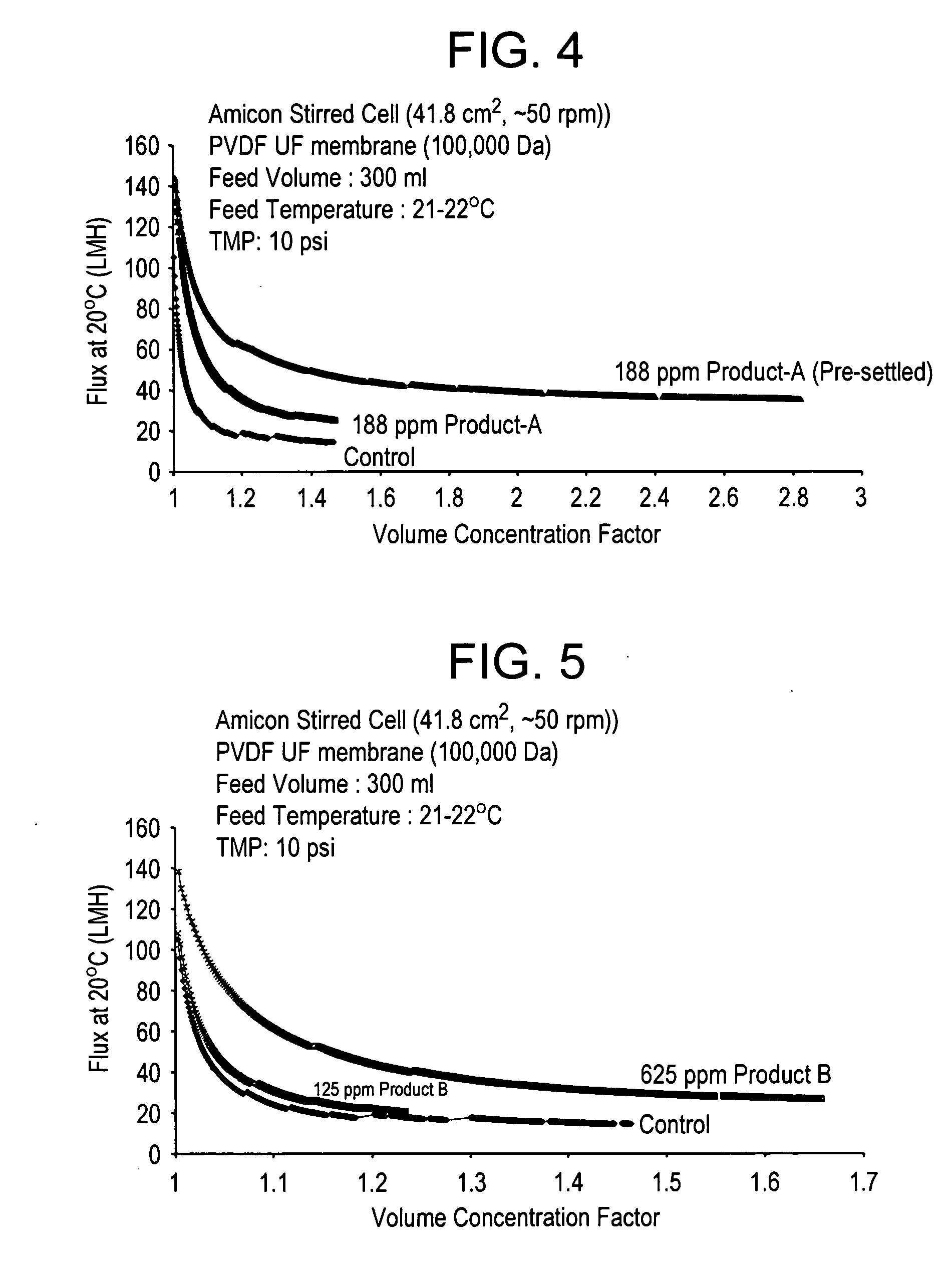Method of improving performance of ultrafiltration or microfiltration membrane processes in backwash water treatment
a technology of ultrafiltration or microfiltration membranes and backwashing water, which is applied in the direction of membranes, reverse osmosis, separation processes, etc., can solve the problems of high operating cost, high capital cost (more membranes), and high operating cost (frequent membrane cleaning)
- Summary
- Abstract
- Description
- Claims
- Application Information
AI Technical Summary
Benefits of technology
Problems solved by technology
Method used
Image
Examples
example 1
[0045]Increasing amounts of organic (cationic and anionic) polymers, inorganic products, and a combination of inorganic and organic products were slowly added into a backwash water sample (obtained from a southern US raw water microfiltration plant) in separate jars while mixing with a magnetic stirrer for about 3 minutes. The turbidity of supernatant was measured after the treated solids were settled for 10 minutes in ajar.
TABLE 1Turbidity of treated and untreated backwash water sampleDosageSupernatantProduct(ppm-active)Turbidity* (NTU)None525Product-A (Core Shell5.25195DMAEA.MCQ / AcAm, 50%cationic mole charge)Product-B2.5321(DMAEA.MCQ / BCQ / AcAm,35% cationic mole charge)Product-c3.1544(Aluminum Chlorohydrate +1.1PolyDADMAC)Ferric Chloride4.5496Aluminum Chlorohydrate6.25543*After settling for 10 minutes
[0046]It is clear from Table 1 that turbidity decreased significantly with cationic organic polymers, but not with cationic inorganic products, or blend of inorganic product and organic...
example 2
[0047]Utilizing the protocol described in Example 1, backwash water treated with Product-A (Core shell DMAEA.MCQ / AcAm) was directly filtered through a UF membrane and the permeate flux monitored as a function of volume concentration factor (“VCF”) (i.e. ratio of Feed volume to Retentate volume). Results are shown in FIG. 4. FIG. 4 also shows the results for filtration of treated and then pre-settled backwash water.
[0048]It is apparent from FIG. 4, that at a given volume concentration factor, permeate flux was about 100% higher than control, and after pre-settling of treated solids permeate flux was higher by more than 200% than control.
example 3
[0049]Utilizing the protocol described in Example 1, backwash water was treated with two different dosages of Product-B (DMAEA.MCQ / BCQ / AcAm) before filtering through a UF membrane. Results are shown in FIG. 5.
[0050]It is apparent from FIG. 5 that increasing dosage of Product B resulted in increase in permeate flux, which was about 100% higher than control with 625 ppm product-B, for example, at VCF of 1.3.
PUM
 Login to View More
Login to View More Abstract
Description
Claims
Application Information
 Login to View More
Login to View More - R&D
- Intellectual Property
- Life Sciences
- Materials
- Tech Scout
- Unparalleled Data Quality
- Higher Quality Content
- 60% Fewer Hallucinations
Browse by: Latest US Patents, China's latest patents, Technical Efficacy Thesaurus, Application Domain, Technology Topic, Popular Technical Reports.
© 2025 PatSnap. All rights reserved.Legal|Privacy policy|Modern Slavery Act Transparency Statement|Sitemap|About US| Contact US: help@patsnap.com



